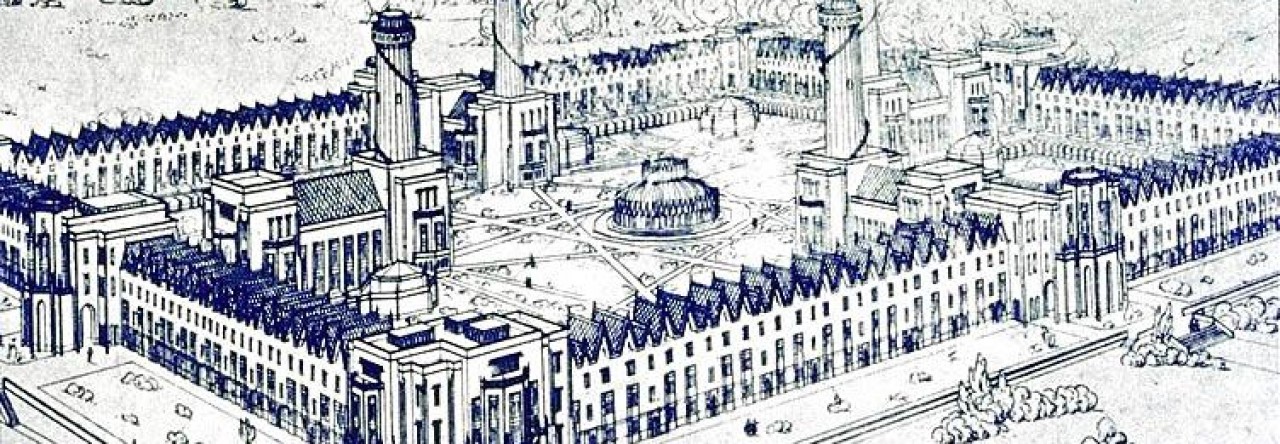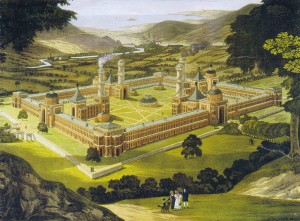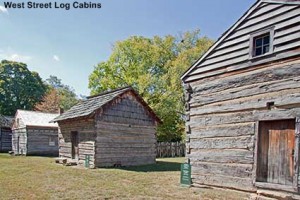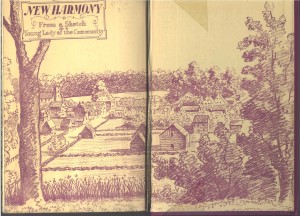“Everything imaginable was to be included for their comfort and enlightenment.” (Pitzer, 96).
Owen’s Promises:
- The people’s comfort within the society would include grand brick buildings complete with running water, electricity and spacious rooms.
- There would be factories and mills dotting the countryside, providing the citizens with every necessity of life.
Reality:
In Carol Komerten’s book Women in Utopia, she states that instead of grand brick buildings, new recruits arrived at New Harmony finding only log cabins, mosquitos, and empty fields.
- Food was scarce. Agriculture was the community’s main source of food, but many of the members were not skilled farmers.
- Some family, like the Pears’ family, had up to nine family members sharing the space of a tiny log cabin.
West Street Log Cabins, New Harmony, IN.
“From a Sketch by a Young Lady of the Community”.
Kolmerten, Carol A. “The Collapse of the Communities: The Ideology of Gender and the ‘Woman Problem’”. In Women in utopia: the ideology of gender in the American Owenite community, 68-110. Bloomington, Indiana: Indiana University Press, 1990.
Pitzer, Donald E. “The New Moral World of Robert Owen and New Harmony” in America’s Communal Utopias. Edited by Donald E. Pitzer. Chapel Hill, NC: University of North Carolina Press, 1997, pp. 88-134.



